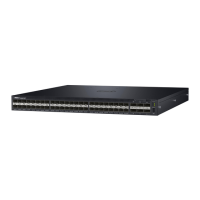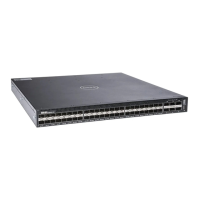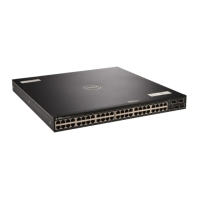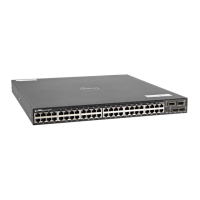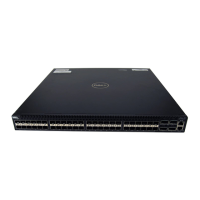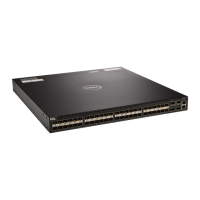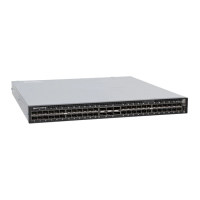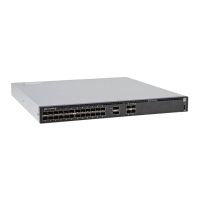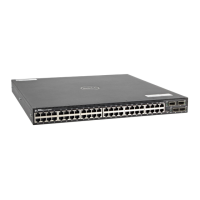Buffer Tuning
Buffer tuning allows you to modify the way your switch allocates buffers from its available memory and helps
prevent packet drops during a temporary burst of traffic.
The application-specific integrated circuit (ASICs) implement the key functions of queuing, feature lookups,
and forwarding lookups in hardware.
Forwarding processor (FP) ASICs provide Ethernet MAC functions, queueing, and buffering, as well as store
feature and forwarding tables for hardware-based lookup and forwarding decisions. 1G and 10G interfaces
use different FPs.
The following table describes the type and number of ASICs per platform.
Table 102. ASICs by Platform
Hardware FP CSF
S50N, S50V 2 0
S25V, S25P, S25N 1 0
As shown in the following example, you can tune buffers at three locations.
1 CSF — Output queues going from the CSF.
2 FP Uplink — Output queues going from the FP to the CSF IDP links.
3 Front-End Link — Output queues going from the FP to the front-end PHY.
All ports support eight queues, four for data traffic and four for control traffic. All eight queues are tunable.
Physical memory is organized into cells of 128 bytes. The cells are organized into two buffer pools — the
dedicated buffer and the dynamic buffer.
• Dedicated buffer — this pool is reserved memory that other interfaces cannot use on the same ASIC or
by other queues on the same interface. This buffer is always allocated, and no dynamic re-carving takes
place based on changes in interface status. Dedicated buffers introduce a trade-off. They provide each
interface with a guaranteed minimum buffer to prevent an overused and congested interface from
starving all other interfaces. However, this minimum guarantee means that the buffer manager does not
reallocate the buffer to an adjacent congested interface, which means that in some cases, memory is
under-used.
• Dynamic buffer — this pool is shared memory that is allocated as needed, up to a configured limit.
Using dynamic buffers provides the benefit of statistical buffer sharing. An interface requests dynamic
buffers when its dedicated buffer pool is exhausted. The buffer manager grants the request based on
three conditions:
• The number of used and available dynamic buffers.
• The maximum number of cells that an interface can occupy.
• Available packet pointers (2k per interface). Each packet is managed in the buffer using a unique
packet pointer. Thus, each interface can manage up to 2k packets.
You can configure dynamic buffers per port on both 1G and 10G FPs and per queue on CSFs. By default, the
FP dynamic buffer allocation is 10 times oversubscribed. For the 48-port 1G card:
Debugging and Diagnostics 1247
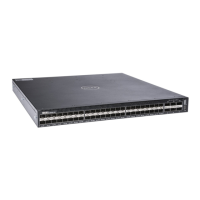
